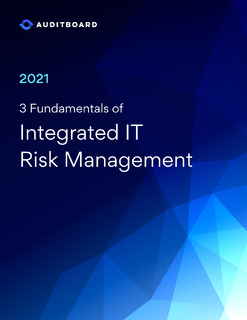In today’s increasingly digitized, remote-savvy business world, effectively identifying and managing IT risk has never been more crucial for protecting and achieving organizational objectives. Information security risk, privacy/identity management, and cybersecurity risk each rank among the top ten risks for 2021, as well as the top ten risks projected for 2030, according to a recent report by Protiviti and NC State’s ERM Initiative.1 Yet, there is a wide gulf between businesses with advanced, continuous IT risk monitoring programs and those that struggle to effectively assess and manage their key IT risks. A market research survey of over 230 IT risk professionals conducted by AuditBoard in April 2021 found that while two-thirds of respondents apply a continuous, proactive approach to IT risk management, nearly 30% of respondents take an ad-hoc, reactive approach to managing IT risk.
This report will examine the findings from AuditBoard’s 2021 IT Risk Survey and discuss three fundamental concepts of an integrated IT risk management approach:
- Treat the risk assessment as more than a checkbox exercise.
- Build agile and continuous processes into your foundation.
- Formally align efforts across risk groups.
In addition, this report will cover best practices for embedding agile and continuous processes into your IT risk program and building a successful foundation for continuous risk management.

